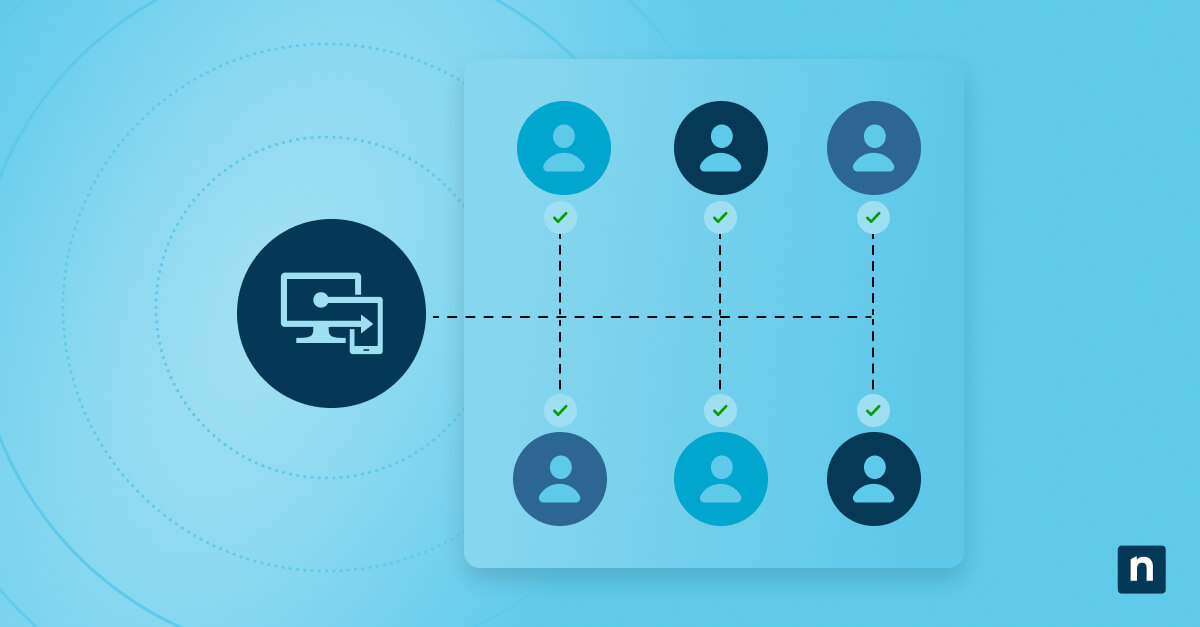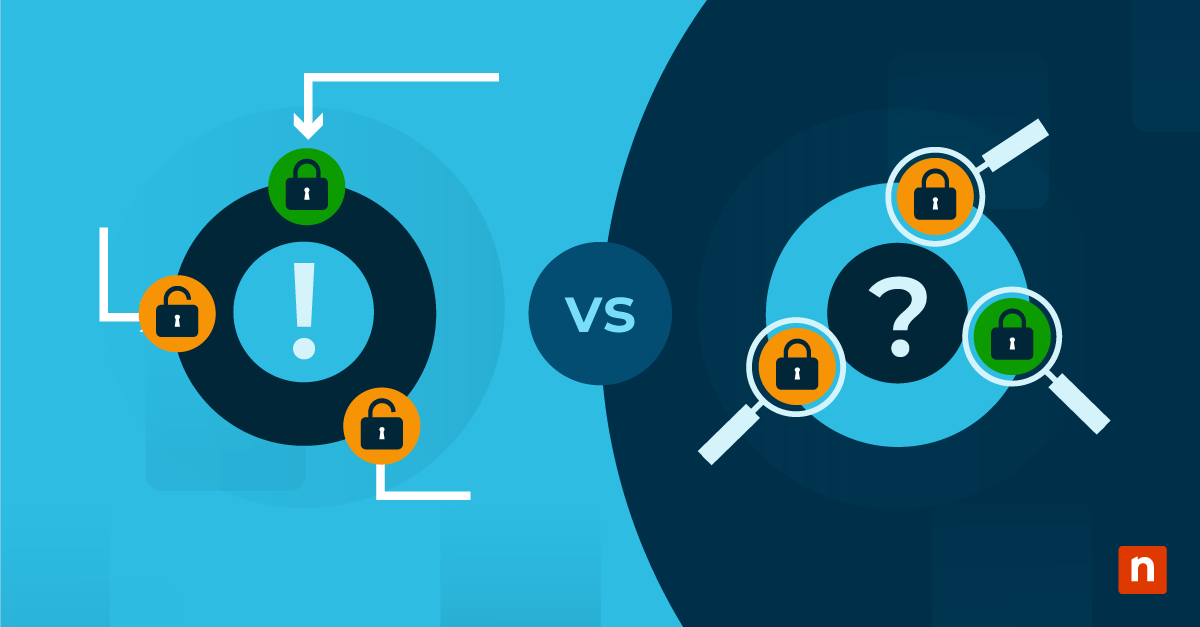Key Points
Publishing A Marketing Book for MSPs
- Why Publish an MSP Marketing Book: Books still stand out in a digital-first world by combining credibility, depth, and storytelling that shorter content can’t replicate.
- Three Strategies for Marketing Your Book: Keep your first book short, focused, and digital; use the book to create new marketing resources; and build a comprehensive marketing campaign around your new book.
- Publishing a Book Is Right for You If: You want to build authority and position yourself as a go-to expert in managed services or a specific vertical.
- Publishing a Book May Not Be Right at This Time If: You’ve yet to narrow your niche, find core expertise, lack the resources and time, and unsure of the target audience.
With all the digital marketing tactics and tools that MSPs can use today, going old school is sometimes still the secret sauce. We’ve previously spoke of the enduring power of direct mail and it’s ability to stand out in a way easily-deleted or filtered-out emails can’t. This time, we find that it’s worth revisiting the appeal of writing and publishing your own book.
We all know the talks about attention spans, artificial intelligence, and the digital-first marketing world—but what’s often missing from that conversation is how authenticity and human storytelling still cut through the noise better than any algorithm ever could.
Besides, many of the best marketing leaders or business consultants lead with a book or two to drive engagement and brand equity. The opportunity for sales aren’t going to be the same, but MSPs can find value in this strategy by further establishing themselves as subject matter experts and voice of authority.
If all of that sounds interesting to you, dive-in to see some tips and real-world examples.
How to decide if publishing a book fits your marketing strategy
Before you make a beeline for your next literary project, take a moment to run through this questionnaire to help map your priorities and readiness for publishing a book.
| Question | If Yes → | If No → |
| Do you want to build authority and position yourself as a go-to expert in managed services or a specific vertical? | ✅ You’re a strong candidate.
A book can showcase your experience, attract higher-value clients, and set you apart from competitors. |
🚫 Revisit your core expertise or narrow your niche before investing in a book. |
| Do you want a unique physical asset to elevate your direct mail or event marketing? | ✅ Books make memorable leave-behinds that build personal connection and linger long after brochures hit the bin. | 🚫 Stick with short-form content like postcards, flyers, or digital assets for now. |
| Are you looking to expand speaking or media opportunities? | ✅ “Author of…” has real weight. A published book can open doors to panels, podcasts, and press. | 🚫 Focus first on building visibility through blogs, LinkedIn posts, or webinars. |
| Could your book boost discoverability across search engines, Amazon, or your site? | ✅ Publishing increases your digital footprint and helps your name appear in new customer searches. | 🚫 Continue refining your SEO and website content before adding new platforms. |
| Do you have content worth repurposing (or plans to repurpose your book later)? | ✅ Great! You’ll maximize your effort by spinning chapters into blogs, webinars, or podcasts. | 🚫 Consider building a content library first; then compile it into a future book. |
| Do you have a clear, specific angle or niche to focus on? | ✅ Perfect—you’re positioned to make a real impact in your space. | 🚫 Hold off. Identify your differentiator before committing to a full project. |
| Can you dedicate time and energy to the writing and publishing process? | ✅ You’re ready to move forward — even with help from a freelancer or ghostwriter. | 🚫 Save this idea for when you can give it proper attention and quality control. |
| Are you okay with your book being a brand-builder, not a direct revenue stream? | ✅ Excellent — think of it as long-term brand equity, not short-term profit. | 🚫 This tactic might not align with your goals yet. Explore other campaigns first. |
If you answered “yes” to most of the left-hand side queries, publishing a book can be one of the most distinctive, high-impact tactics you can add to your MSP marketing toolkit.
Becoming a trusted voice in the MSP space starts with owning your story.
→ Start your journey with these FREE NinjaOne MSP marketing resources
That said, you can also do some further reading below or head straight to the MSP strategies for publishing a book.
5 reasons to consider adding a book to your MSP marketing strategy
So, why exactly would you want to zig and publish a book while many of your competitors are zagging? For one, books give you a platform to share your insights and experience in a way few other marketing channels can. It’s as formidable as ever in industries built on trust and communication.
1. Establish your expertise and position as a thought leader
While “thought leader” might seem overused, the reality is that positioning yourself as an expert in managed services—or better yet, in a specific client vertical—builds lasting trust and visibility. A well-written book doesn’t just showcase your expertise; it reinforces your credibility and sets you apart as the go-to resource in your field.
2. Create a unique physical/direct mail marketing asset
Most of the time, flyers and brochures get lumped in with the junk mail and wind up in the bin. Books, though? I don’t know about you, but I can’t just bring myself to toss any book out.
I recently received books from MSP marketing consultant Paul Green and Tech Tribe founder Nigel Moore, and while I didn’t read either immediately, they did wind up with prime real estate on my home-office desk, basically serving as daily mini-billboard ads for the two blokes. Finally, when the right down moment came there they were, ready for me to give them my undivided attention. From there, they went up on a bookcase, where they’ll probably grab my attention again sometime down the road.
That’s a vastly different outcome, say, if they’d sent me a one-pager.
I’d argue that there’s a special connection when with the author(s) when you’ve read their book. You really can feel as though you’re getting to know them and experiencing something one-for-one—smart authors double-down on that by sending copies that are signed or even have a personalized message. It’s not as good as talking in person, of course, but, in a way, it’s close.
When in-person meetings do become a regular part of your new business routine again, books will also make for a fantastic “leave-behind” asset that feels a lot more substantial than a brochure or business card.
For a deeper dive into planning and executing impactful campaigns like this, watch our video on Creative MSP Marketing Campaign Ideas, where we walk through how to prepare your direct mail strategy and share proven, attention-grabbing examples that work.
3. Win more speaking opportunities
How often do you hear “author of” after someone’s name when perusing the list of presenters at an industry conference?
Publishing a book showcasing your expertise on a particular subject can cement your position you as a top choice for speaking engagements, media interviews, and more, which are all key avenues to expand your audience.
Presenting at conferences and being quoted in media outlets are obviously both great ways to build up your personal and professional brands, and, yes, having a book can help.
4. Increase your discoverability
The benefits of publishing a physical book also extend into the digital world.
Having your name attached to a book is another path to landing pages and blogs that become touchpoints for your audience. Publishing increases the chances that your name and business will be discovered when people are researching relevant topics via search engines (e.g., Google) and marketplaces (e.g., Amazon).
5. Create content that can be repurposed
I’m a repurposing junkie, especially when it comes to larger pieces of content like a book. If you’re going to spend all that time and effort you’ve got to make sure you’re getting the most bang for your buck.
For example, you can easily multiply your returns off the work that goes into writing a book by repurposing various chapters into new marketing resources and campaigns such as blog posts, podcast episodes, webinars, and more.
It’s also important to note that this concept works both ways, you can also make a book from many of the marketing resources you’ve already created! More on that strategy in just a bit.
3 reasons writing a book may not be right for you (yet)
This next message is brought to you by Captain Obvious: “Writing a book is hard.”
There are definitely ways to make it less hard (repurposing existing material, hiring a freelance writer, etc.), but even under the best circumstances it’s going to cost you time and effort/money. And just because you do write a book doesn’t mean it will be effective.
If any of the following apply to you then you may want to put a pin in those literary aspirations. At least for now.
1) You don’t have a specific angle
If you don’t have a particular niche you’re targeting, or a unique viewpoint to promote, then you may likely have trouble gaining real traction with the book. Some MSPs are able to utilize general guides to IT or managed services, but the ceiling for these being significantly effective is fairly low.
Hold off on committing to the process of writing a book until you’ve identified a specific, underserved topic or angle that speaks directly to your ideal audience.
2) You really don’t have any extra time or attention to spare
If writing a book took no time at all, everyone would have one published and it wouldn’t be a very effective marketing strategy.
Writing a book requires research, writing, revising, and more revising. And then there’s all the work that goes into self-publishing (although more and more platforms and options are popping up all the time). Only you can determine whether or not writing a book is worth your time and effort, or if it’s better to concentrate your marketing efforts on other MSP marketing tactics.
3) You need it to be a significant revenue stream
As we’ll explore more in the next section, books created specifically as marketing material rarely create a steady or substantial revenue stream. We don’t recommend going into a writing project (not your first one, anyway) with the hope that your new book will generate a substantial amount of money. In fact, to keep the barrier to entry low, you may likely want to either price the book low enough to simply cover your costs, or eat the costs and give away copies for free.
Automate, centralize, and scale your IT management with NinjaOne—and reclaim the time to focus on strategy and storytelling.
3 strategies for using a book to drive your MSP marketing
If that last section didn’t scare you off then let’s dive into making that book of yours happen.
Spoiler alert: There’s unfortunately no true one-size-fits-all approach to successfully putting pen to paper. And the process for publishing a book depends a lot on the specific platform you choose to print (or host) and sell it. But with that said, here are three strategies that can help guide you — ranging from keeping things quick and simple to making a book the central component in a full-blown, multi-channel marketing campaign.
As with previous marketing guides we’ve written, I’m going to use the “crawl, walk, run” model.
Crawl: Keep your first book short, focused, and digital
Your very first priority when setting out to write a book should be to find your niche. Take your time and take a lot of careful consideration here, as this decision may end up informing the direction of future marketing campaigns that you build around your book.
A great way to find your angle or niche is to look at the types of tickets and/or questions frequently come up from your best clients, and then actively look to see if they correspond with a noticeable gap in the information that’s out there.
It’s amazing if you can stumble across a topic that hasn’t really been covered, but it’s more likely you may find that there are books and articles out there, but none of them really speak specifically to your audience. Ex: There are a million and one books about phishing, but how many have been written explicitly for small to medium-sized law firms?
Upskill as needed or hire strategically
With your niche identified it’s time to get cracking on content! If you don’t consider yourself much of a writer or editor, there are of course people you can hire to help. You can also dive deep into the content you’ve already created to see what can be stitched together to form a book. Already have some YouTube videos, podcast episodes, or a few blog posts that have performed really well? Then you’ve got some great resources to get started with.
Once you’ve got your content sorted out, you can test out the waters by holding off on printing and making your book an ebook, instead.
There are plenty of free or affordable ebook templates and examples online that will help you get started. For modern options and an easy-to-use design program I can vouch for Canva (we’ve got a guide to getting started with Canva here).
The nice thing about an ebook is you can immediately use it in various ways, including as a lead magnet on your website that converts visitors into leads when they fill out a form to download.

💡 Example: See how Accent IT uses founder Marty Kaufman’s ebook “Do IT Right” as a lead magnet on the company’s website.
Walk: Publish a Physical Book to Create a Whole New Marketing Resource
While this article isn’t going to dive into the specifics of self-publishing (we might cover that in the future, but for now here’s a guide from Self-Publishing School), the intermediate approach to creating your own book for marketing purposes is to go from digital to physical. You can choose to flesh out your ebook or, if you’re happy with the content you have, you can simply design (or hire someone to design) a cover and print your book.
Repurpose or build new content around your published book
There are a ton of options for printing services, from companies like Lulu to the world-devourer itself, Amazon, which offers its own print-on-demand service. Many of these services also offer options to help you sell printed books — or offer them as lead magnets — directly from your website or sell them on a larger marketplace (like Amazon).
As mentioned, you can also consider shipping copies as part of new direct mail campaigns, or utilizing them as a high-value, leave-behind asset once live events and face-to-face meetings are encouraged again.

💡 Example: Perhaps the best example of an MSP using books to establish expertise in a specific niche is Bob Coppedge, the CEO at Simplex-IT.
Bob has turned himself into the go-to guy for co-managed IT services, or CoMITs. His book, The MSP’s Survival Guide to Co-Managed IT Services is a big reason why. Thanks to that positioning, Bob has been interviewed and referenced in a wide variety of channel publications and featured as a guest on countless webinars and webcasts. I also just love that the Simplex-IT landing page for co-managed IT services uses the line, “We wrote the book on it!”
Bob has gone on to publish two additional books, and actively uses them as part of both lead generation and direct mail campaigns. See another example here. This is clearly a tactic that’s worked extremely well for him.
Run: Build a comprehensive marketing campaign around your new book
We mentioned earlier that, unless you’re interested in becoming a full-time author, a book isn’t likely to be a robust revenue stream for your MSP business. However, what it can be is the centerpiece of a robust marketing campaign that also includes referrals, a well-crafted website, a creative direct mail campaign, retargeted ads, social media ads, paid search and SEO, and even your very own quarterly business reviews.
Example: Here are some highly-rated books from MSP consultants on Amazon that have played a central role in their marketing campaigns — ultimately helping them land clients and coaching gigs:
- Updating Servers Doesn’t Grow Your Business: The Essential Guide to Marketing and Growing Your MSP or IT Support Business by Paul Green
- Package, Price, Profit: The Essential Guide to Packaging and Pricing Your MSP Plans Paperback by Nigel Moore
- The MSP Growth Funnel: A Complete Guide To Marketing & Selling Managed Services Paperback by Kevin Clune
Notice how each of these authors keeps their pricing low (or free)? That’s key to making sure their books are effective marketing tools instead of profit centers that would take a heck of a lot more work to sell.
Will you make time to write the next great MSP marketing book?
Now you’ve learned the keys to publishing a book as a marketing asset, but do you have the time? If the answer is no, head over to our Resources Center for more tips on how you can reduce complexity in your operations and scale as a business.
For instance, if you’re ready to see how leaving your legacy RMM can make running your MSP business easier, try NinjaOne free today.








